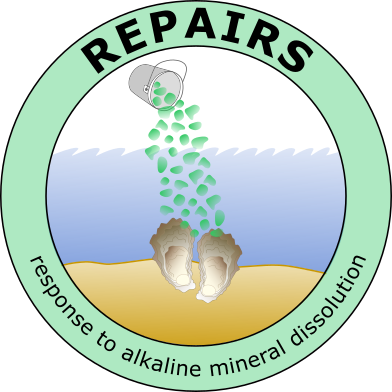Ocean alkalinity enhancement (OAE) has been purposed as a potential geoengineering method to enhance the uptake of atmospheric CO2 into the world’s oceans by increasing the disequilibrium between atmospheric CO2 and that of the surface ocean. Thus, increasing the ocean’s sequestration potential. This project aims to investigate the subsidiary effects of OAE on larvae and post-settled oysters grown for commercial use (Crassostrea gigas). The byproducts of alkaline minerals Olivine and Lime—suggested OAE substances—have the potential to enhance concentrations of Ca, Mg, and heavy metals upon dissolution. This study addresses several major areas of concern presented by the recent NASEM report on CDR specific to OAE. This can be separated into biotic and abiotic parts including the determination of heavy metal bioaccumulation (e.g., Ni) in bivalve tissue along with examining the physiological and calcification effects in response to enhanced concentrations of Ca or Mg. The abiotic component will elucidate the dissolution kinetics of these minerals under high and low temperature and pH. This includes understanding the potential for secondary mineral precipitation which can reduce the potential of OAE. The project will conduct two major scale experiments in controlled laboratory conditions in Brittany and Villefranche-sur-Mer, FR. Results from the project will elucidate current knowledge gaps about the potential negative side effects of OAE.
